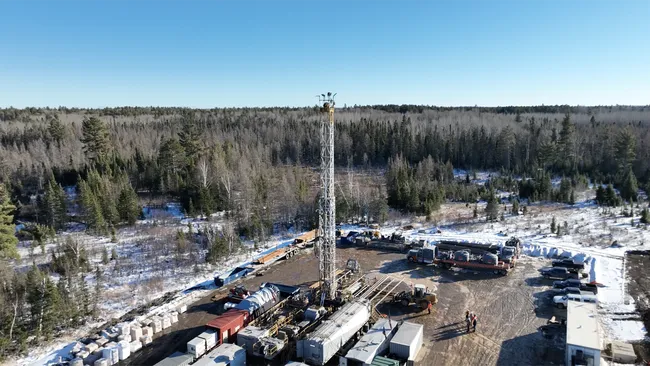A newly discovered helium reservoir in northern Minnesota is turning out to be much larger than expected, according to fresh seismic data. The survey, conducted just outside of Babbitt, indicates that the reservoir extends both laterally and at deeper levels, bringing excitement to Pulsar Helium and its potential clients. This discovery could be a game-changer in the global helium market, where supply shortages have been a growing concern.
Recent tests have also confirmed helium concentrations underground are even higher than the already impressive results recorded in March. Pulsar Helium’s president and CEO, Thomas Abraham-James, expressed enthusiasm, stating, “We are thrilled with this 2D seismic data.” The study confirms the presence of helium-rich pockets between 1,750 and 2,200 feet (530 to 670 meters) underground and suggests even more gas-bearing zones at greater depths.
Helium shortage solution?
Laboratory tests in June revealed helium concentrations between 8.7% and 14.5%, surpassing the previous maximum estimates. These levels are unprecedented in the industry, especially considering that any deposit above 0.3% is considered economically significant. With helium being an essential component in rockets, nuclear reactors, and medical equipment like MRI machines, the discovery comes at a crucial time.

Despite being the second most abundant element in the universe, helium is scarce on Earth, forming only through radioactive decay and nuclear fusion. Global shortages have already affected several industries, and the situation remains critical. Abraham-James previously described the market as “pretty dire,” emphasizing that Minnesota’s helium reserves could play a vital role in stabilizing supply within the U.S.
Unlike traditional helium extraction methods that require fracking, this reservoir naturally releases helium at a rate of up to 821,000 cubic feet (23,250 cubic meters) per day. This makes the extraction process significantly more efficient and environmentally friendly. Pulsar Helium representatives described the findings as “world-class” and are now working with independent analysts to determine the exact size of the reservoir. The final assessment is expected by the end of July.
If extractable, this discovery could reshape the helium industry, offering a stable supply without relying on above-ground storage. It’s an exciting development that could bring relief to industries worldwide. Stay tuned for updates as more data is released!

